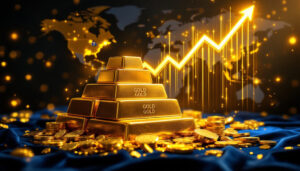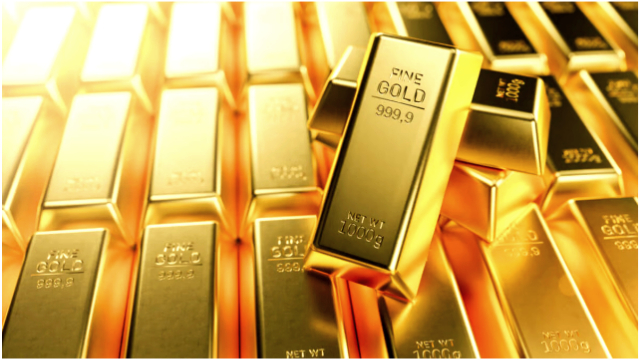For investors, jewellery enthusiasts, and residents of Qatar, the price of gold is more than just a number on a screen; it’s a barometer of economic sentiment, a key cultural purchase, and a popular investment vehicle. The last five years have been a rollercoaster for global markets, and the gold market in Qatar has mirrored this turbulence, influenced by a complex mix of international trends and local demand.
This definitive guide provides a detailed, data-driven analysis of the gold price in Qatar over the last five years. We will dissect the annual trends, explore the crucial factors behind the price movements, and explain the unique aspects of buying gold in the Qatari market. Our goal is to equip you with the knowledge to understand past performance and make informed decisions, whether you are looking to invest, buy a special gift, or simply satisfy your curiosity about this precious metal’s journey.
Global and Local Factors Influencing Gold Prices in Qatar
Before delving into the specific annual data, it’s essential to understand the engine that drives gold prices worldwide and how it specifically applies to Qatar. The Qatari Riyal (QAR) is pegged to the US Dollar (USD) at a fixed rate of 3.64. This peg means that international gold prices quoted in USD have a direct and immediate impact on local prices. When the international gold price per ounce in dollars moves, the Qatari gold price per gram in riyals follows almost in lockstep.
Several global macroeconomic factors dictate these international price swings. Economic uncertainty and geopolitical tensions, such as the war in Ukraine or conflicts in the Middle East, often cause investors to flock to gold as a ‘safe-haven’ asset, driving its price up. Conversely, a strong US economy and rising interest rates set by the Federal Reserve can make interest-bearing assets more attractive than non-yielding gold, potentially suppressing its price. Inflation is another critical driver; gold is traditionally seen as a hedge against the eroding value of currency.
While international prices set the baseline, local factors in Qatar also play a role. The primary local component is the making charges, which are the labour costs involved in crafting a piece of jewellery. These charges are not based on the gold’s value but are a fixed fee per gram that varies depending on the complexity of the design and the retailer’s prestige. Furthermore, local demand sees significant spikes during festive seasons like Eid, Ramadan, and wedding periods, which can lead to temporary premiums on jewellery above the pure gold price.
Key Influencers:
- The USD/QAR peg means international dollar gold prices directly dictate Qatari gold rates.
- Global factors like economic uncertainty, US interest rates, and inflation are the primary price drivers.
- Local making charges and seasonal demand surges add a premium to jewellery prices in Qatar.
Gold Price in Qatar: 2019-2020 Analysis
The period from 2019 to 2020 was one of dramatic transformation for gold, moving from a steady upward trend to a historic peak. In 2019, the average closing price for 24K gold was approximately QAR 172 per gram. The year was characterised by moderate but steady growth, fueled by ongoing global trade tensions and a gradual shift in investor sentiment towards safer assets. The price consistently traded within a band, offering stability for buyers.
Everything changed in early 2020 with the onset of the COVID-19 pandemic. The initial global lockdowns and market panic in March 2020 caused a liquidity crunch, where even gold was sold off to cover losses in other assets. However, this dip was short-lived. Unprecedented monetary stimulus from governments and central banks worldwide, coupled with deep economic uncertainty, triggered a massive rally. Investors sought the ultimate security of tangible assets.
This surge propelled gold to its then-all-time high in August 2020, with 24K gold price in Qatar breaching the QAR 250 per gram mark in the Qatari market. The year closed at an average significantly higher than where it started, cementing 2020 as a historic year for gold. This period demonstrated gold’s resilience and its role as a preservative of wealth during a genuine global crisis, rewarding those who held it through the volatility.
Period Summary:
- 2019 saw stable growth, with 24K gold averaging around QAR 172 per gram.
- The COVID-19 pandemic caused initial volatility but led to a massive safe-haven rally.
- Gold hit a then-record high above QAR 250/gram in August 2020.
Gold Price Trends in Qatar: 2021-2022 Review
Following its spectacular peak in 2020, gold entered a phase of consolidation throughout much of 2021. The price stabilised, trading in a range between QAR 210 and QAR 230 per gram for 24K gold. This period of relative calm was largely due to optimistic forecasts of a global economic recovery from the pandemic, which reduced the immediate urge for safe-haven assets. The rollout of vaccines and reopening of economies shifted investor focus towards riskier assets like stocks.
The narrative began to shift towards the end of 2021 and into 2022, as inflation rates across the globe began to climb at a worrying pace. Initially, this rising inflation supported gold prices, as investors remembered its historical role as an inflation hedge. However, the primary story of 2022 became the aggressive response of central banks, particularly the US Federal Reserve, which began a series of rapid interest rate hikes to combat inflation.
These rate hikes created a strong headwind for gold. Higher interest rates increase the opportunity cost of holding gold, which offers no yield. Consequently, for much of 2022, the gold price faced downward pressure despite high inflation. The price experienced volatility, reacting to each new inflation data point and central bank announcement, but the overall trend for the year was sideways to slightly negative, as the market was caught between two opposing forces: inflationary support and monetary policy suppression.
Market Dynamics:
- 2021 was a year of consolidation after the 2020 highs, with prices ranging between QAR 210-230.
- Soaring inflation in late 2021 and 2022 provided underlying support for the gold price.
- Aggressive interest rate hikes by the Fed created significant downward pressure throughout 2022.
Qatar Gold Market Performance in 2023-2024
The latter part of our five-year review continued to be dominated by the tension between persistent inflation and high interest rates. Throughout 2023, gold prices in Qatar demonstrated remarkable resilience. They managed to hold firm and even trend upwards gradually despite the high-interest-rate environment, which traditionally is negative for gold. This strength was underpinned by continued geopolitical risks, such as the ongoing war in Ukraine, and sustained central bank buying of gold globally, notably from China and India.
The key psychological barrier was shattered in late 2023 and confirmed in 2024, as gold reached new nominal all-time highs. In the Qatari market, this translated to 24K gold prices consistently trading above the QAR 250 mark and pushing towards new frontiers. This rally occurred even as the Fed maintained high rates, surprising some market observers. The driver was a combination of heightened geopolitical tension and market anticipation of a future pivot in interest rate policy.
By mid-2024, the gold price has established a new, higher trading floor. The market has shown that while interest rates are a powerful short-term influence, deep-seated factors like global instability, de-dollarisation initiatives by some nations, and long-term store-of-value demand can overpower them. The performance in this period solidified gold’s status as a core asset for wealth preservation in a Qatar investor’s portfolio.
Recent Highlights:
- Gold showed unexpected strength in 2023, resisting pressure from high interest rates.
- New all-time highs were breached in late 2023 and 2024, with prices sustaining above QAR 250.
- Sustained central bank buying and geopolitical angst were the primary catalysts for the new highs.
How to Buy Gold in Qatar: A Practical Guide
Understanding the price trends is one thing; knowing how to navigate the physical market in Qatar is another. The most popular venues for buying gold are the traditional souqs, with the Gold Souq in Doha being the epicentre. Here, you will find numerous shops offering a dazzling array of jewellery, from traditional Qatari and Indian designs to modern international styles. Major jewellery brands also have presence in malls like Villaggio and Mall of Qatar, often offering more standardized designs and pricing.
When you ask for the price, retailers will quote you the price based on the day’s international rate plus their making charges. It is absolutely crucial to distinguish between the pure gold value and the making charge. Always ask for the breakdown: “What is the gram rate today, and what is the making charge per gram for this piece?” The making charge is negotiable, especially in the souq, so do not hesitate to discuss it. The final price should be (Gold Weight in Grams x Daily Gold Rate) + (Gold Weight in Grams x Making Charge per Gram).
For those interested in investment rather than jewellery, options are available. You can purchase gold coins and bars from certain banks and authorised dealers in Qatar. These products typically have much lower premiums over the spot price compared to jewellery because they involve minimal craftsmanship. Another modern option is to invest in digital gold or gold-based financial products through international platforms, though availability may vary for Qatari residents. Always ensure you are buying from a reputable, authorised dealer and receive a proper receipt detailing the weight and purity of your purchase.
Buyer’s Checklist:
- Always ask for a clear breakdown of the daily gold rate and the making charge separately.
- Making charges are negotiable, particularly in the traditional souqs.
- For pure investment, consider coins or bars from banks to avoid high jewellery-making costs.
Predicting the Future of Gold Prices in Qatar
Predicting any financial market with certainty is impossible, but we can analyse the factors that will likely influence the future direction of gold prices in Qatar. The most significant immediate factor is the monetary policy of the US Federal Reserve. Market expectations for interest rate cuts in the latter half of 2024 and into 2025 are a primary bullish driver for gold. Lower interest rates reduce the opportunity cost of holding gold, making it more attractive to investors.
Beyond monetary policy, the long-term macroeconomic landscape remains supportive. Geopolitical tensions show no signs of abating, ensuring a steady level of safe-haven demand. Furthermore, the trend of central banks, particularly in emerging markets, continuing to diversify their reserves away from the US dollar and into gold is a structural shift that provides a solid floor for prices. This buying is not based on short-term profit motives but on long-term strategic goals.
For the Qatari market, the direct peg to the USD means these international factors will continue to be the sole driver of the base gold price. Local demand will continue to exhibit seasonal patterns, but the underlying trend will be set globally. Most analysts maintain a cautiously optimistic outlook for gold, suggesting that while volatility will remain, the broader trend could be sideways to positive as the market navigates a potential soft landing for the global economy and shifts in the interest rate environment.
Outlook Factors:
- The timing and scale of US Federal Reserve interest rate cuts are the key short-term drivers.
- Sustained central bank buying and geopolitical instability provide long-term structural support.
- The USD/QAR peg ensures Qatar’s gold price will continue to mirror international USD trends.
Staying informed with accurate and timely data is crucial for navigating this market. For the most reliable and up-to-date precise gold rate information available in Qatar, a dedicated resource is essential for any serious buyer or investor.

